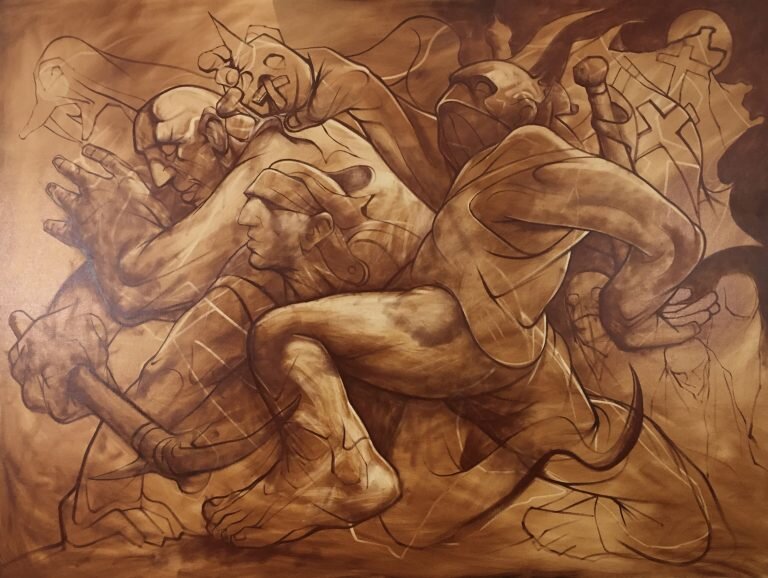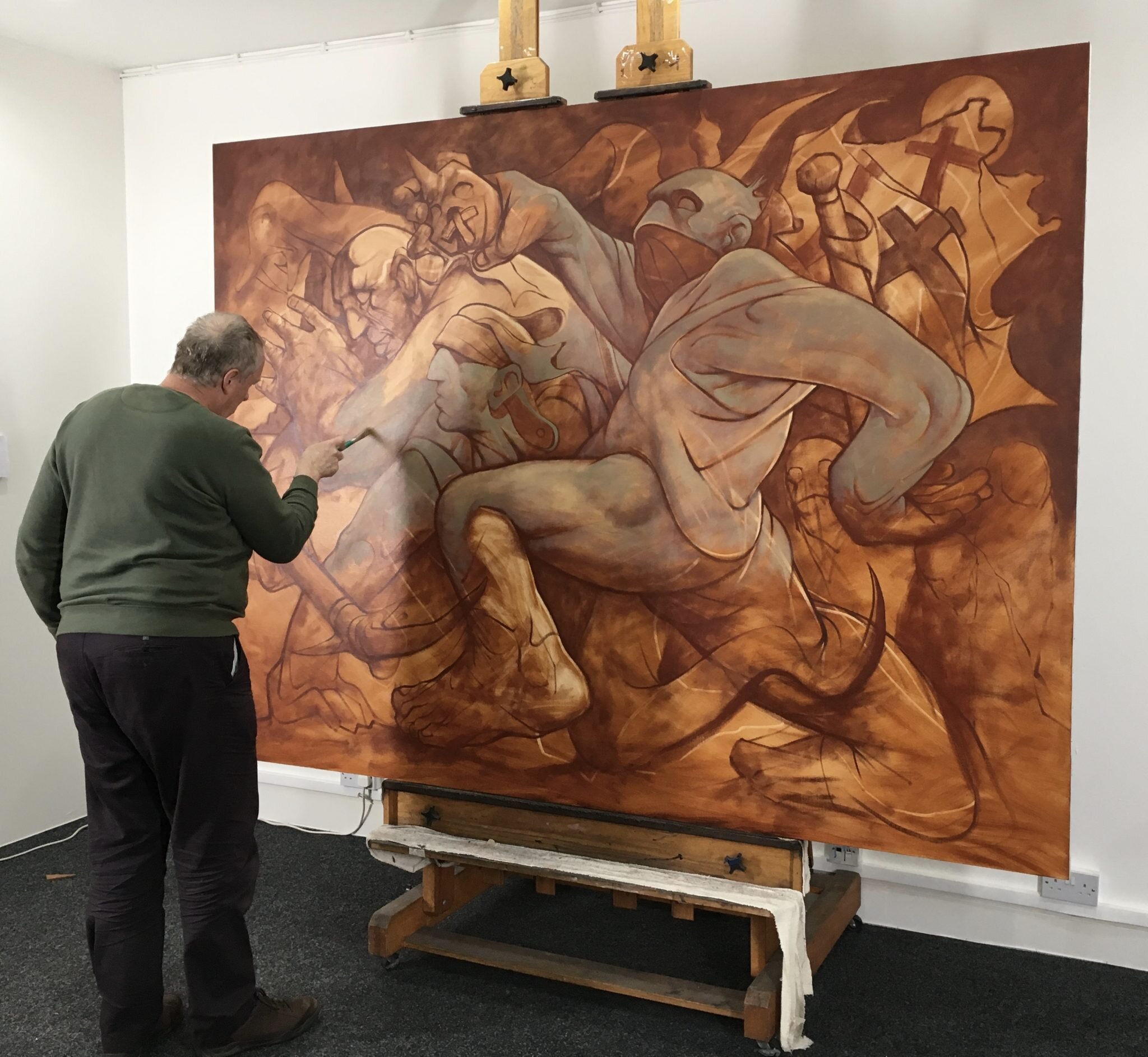Glaze, Scrub, Repeat
Oh, is he still banging on about oil paint - boring! Wrong! My favourite part of painting probably is the first few layers, where I build my drawing and tonal underpainting.
Detail taken from an unnamed study - Oil on Canvas 2021
It is as simple as Burnt Umber and Liquin over a primed surface, then scrub away - OK, a red Sharpie too but no white paint, no mixing, blending, or nothing (skill and talent also optional at this stage). Burnt Umber and Liquin from Windsor and Newton. My primer is from Jackson’s Art Supplies and it’s lush stuff!
Once you have a bit of a drawing you take your paint, in my case Burnt Umber (sometimes Burnt Sienna) and mix it with Liquin (I use Liquin Fine Detail at this stage because it is thinner and even better for covering a large area). Then you cover the whole canvas, really brushing it in with a big fat brush. My brushes are from Omega but also B&Q, the B&Q ones can take an absolute battering and are super cheap. You can get it quite dark, even though it’s transparent paint! Now the fun starts, you put Moby on Spotify, or Aqua (Doctor Jones is actually a great tune) and grab a cloth. Pick a cloth that won’t leave loads of fibres and hairs in your paint, a decent tea towel works best.
Detail of After da Vinci: The Moaner, Lisa - Oil on Canvas 2021
You already have a lot of a painting at this stage, even though you have only used one brush and one pigment.
Wrap your hand or the end of a paintbrush in the cloth and start scrubbing at your highlights and midtones. You will need to keep moving to a clean part of the cloth to get your brightest and lightest highlights. You can scribble in some details and it starts to take shape, especially with marks in certain directions. I always make sure that I leave enough information or drawing for the next stages - I don’t want to have to draw again. The later layers of glazes and impasto will combine with the grooves and contrast that you leave now. Hopefully this layer will be visible in the later stages too - you’re not colouring in as you build up the layers.
Underpainting of Marc & Rachel: 8 Today - Oil on Canvas 2020
I can’t remember exactly but this is two layers: Burnt Umber scrubbed away and Indigo scrubbed away Burnt Umber from Windsor and Newton, Indigo from Jackson’s Art Supplies.
Once you are happy with that first layer, leave it to dry - it’ll dry over night, depending on your paint and Liquin ratio but also, what time you finished painting! Go to bed, wake up and then choose your next colour. I go for Indigo or Prussian Blue because they make it real dark and you can scrub most of it away in some dark areas, so those warmer shadows don’t go too far back and those bits you want to really disappear, like Caravaggio or Rembrandt, shoot off into the distance. Why? Because cool colours, like blue, retreat from the viewer, and warmer colours, red, yellow etc… come forward. The colour combinations start to develop here and it’s always different (that is one of the best things about oil paint). Different thickness of one pigment over another brings out so many different outcomes, combine that with the texture of the canvas and even how the glaze completely changes the colour of the drawing and you have got a proper painting on your hands.
Detail of a study of the Duke of Urbino - Oil on Canvas 2021
Burnt Sienna and Prussian Blue this time, you can already see a range of hues and tone in here and the red Sharpie ranges from red, to pink, purple and blue.
And that will be dry pretty soon too! That means you can paint on the same oil painting three days in a row, without having to do wet-on-wet or alla prima, which is not my preferred way of working.
Underpainting of After da Vinci: The Moaner, Lisa - Oil on Canvas 2021
Indigo over Burnt Umber.
It works with most pigments but transparent and quick drying ones are the best, although the Liquin takes care of that.
Detail of Do they know it’s Socrates? No, because they keep saying it’s Santa! Bust of Socrates (or Santa) - Oil on Canvas 2020
Payne’s Grey from Winsor and Newton here.
I must admit this isn’t my own technique. I have made it my own a bit though, with scrubbing with a cloth instead of using a brush. It is similar to what the Old Masters would have done and what the big man, Peter Howson does - he is the best!







